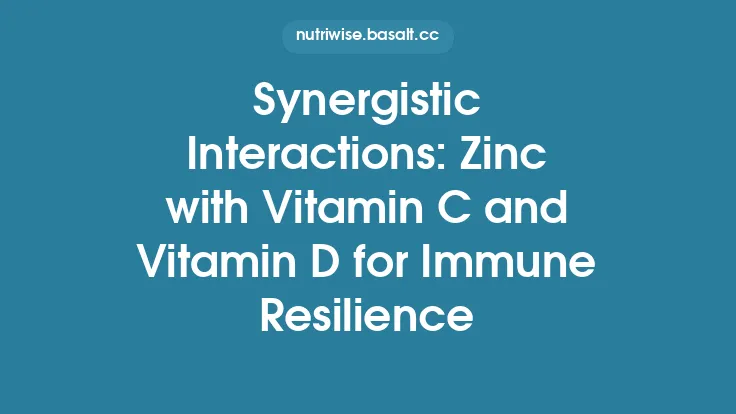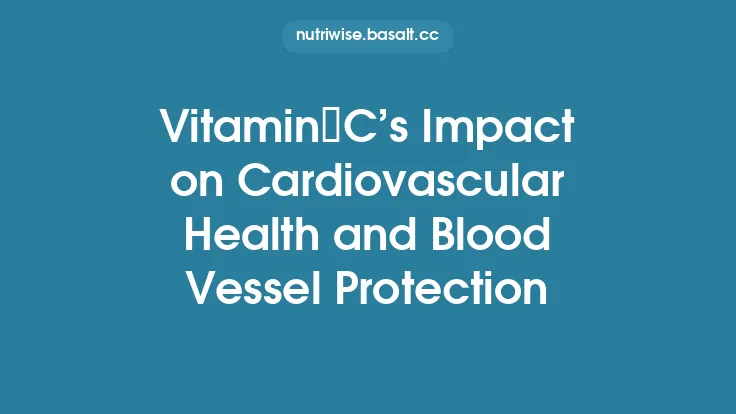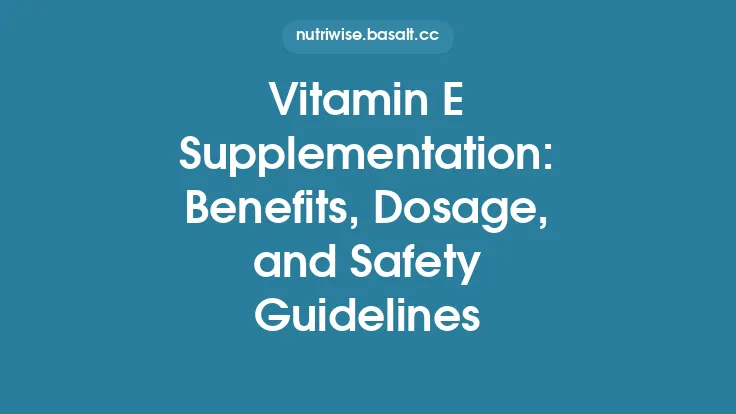Vitamin E is one of the most celebrated ingredients in modern skincare, prized for its ability to help maintain a smooth, luminous complexion. While the science behind its antioxidant power is well‑documented, many people wonder how to translate that knowledge into everyday practices that keep skin cells healthy and radiant. This guide walks you through the practical steps you can take—from selecting the right form of vitamin E to incorporating it into a routine that supports the skin’s natural barrier and repair processes.
How Vitamin E Works in the Skin’s Defense Arsenal
When the skin is exposed to ultraviolet (UV) radiation, pollution, or even everyday mechanical stress, reactive oxygen species (ROS) are generated. These highly reactive molecules can damage cellular lipids, proteins, and DNA, leading to premature aging, loss of elasticity, and uneven tone. Vitamin E, a lipid‑soluble molecule, resides within the cell membranes of the epidermis and dermis, where it can intercept ROS before they propagate damage.
In addition to neutralizing free radicals, vitamin E:
- Stabilizes cell membranes – By integrating into the phospholipid bilayer, it helps preserve membrane fluidity, which is essential for nutrient transport and waste removal.
- Modulates inflammation – It can down‑regulate inflammatory mediators such as prostaglandins, reducing redness and swelling after environmental insults.
- Supports collagen integrity – By protecting fibroblasts from oxidative stress, vitamin E indirectly aids the synthesis of collagen and elastin, key proteins for firmness.
These actions collectively create a protective shield that keeps skin cells functioning optimally, which translates into a smoother, more radiant appearance.
Choosing the Right Vitamin E Form for Topical Use
Vitamin E is not a single compound; it exists as a family of related molecules. The most common forms found in skincare are:
| Form | Chemical name | Typical use | Key characteristics |
|---|---|---|---|
| α‑Tocopherol | Natural vitamin E | General antioxidant | Highly active but can be unstable in light and air |
| Tocopheryl acetate | Esterified α‑tocopherol | Stabilized ingredient | Converted to active α‑tocopherol by skin enzymes; more shelf‑stable |
| Tocotrienols | α‑, β‑, γ‑, δ‑tocotrienol | Advanced anti‑aging | Possess a shorter side chain, allowing deeper penetration and stronger antioxidant capacity |
| Mixed tocopherols | Blend of α, β, γ, δ | Broad‑spectrum protection | Offers synergistic benefits across the tocopherol family |
For most consumers, tocopheryl acetate is the most practical choice because it remains stable in creams and serums until it reaches the skin, where enzymes convert it to the active form. If you’re seeking a more potent, research‑backed option and are comfortable with slightly higher cost, look for products that list tocotrienols or a mixed tocopherol blend.
Formulation Tips: Maximizing Stability and Penetration
Even the most effective vitamin E molecule can lose potency if it’s not properly formulated. Here are the technical considerations that separate a high‑performing product from a mediocre one:
- Encapsulation
- *Liposomal or nanoparticle* carriers protect vitamin E from oxidation and improve its ability to cross the stratum corneum. Look for terms like “liposomal vitamin E” or “nano‑emulsion” on the ingredient list.
- Antioxidant Pairing (within the same product)
- While we avoid deep discussion of interactions, pairing vitamin E with a stable, complementary antioxidant such as ferulic acid can create a “double‑shield” effect, preserving vitamin E’s activity longer.
- pH Compatibility
- Vitamin E is most stable in formulations with a pH between 5.5 and 7.0. Products that are overly acidic or alkaline may accelerate degradation.
- Packaging
- Air‑tight, opaque containers (e.g., amber glass or airless pumps) limit exposure to oxygen and light, both of which can oxidize vitamin E.
- Concentration
- For topical use, concentrations ranging from 0.5% to 2% are typical. Higher percentages may feel greasy and can increase the risk of irritation without delivering proportionally greater benefits.
Integrating Vitamin E into Your Daily Skincare Routine
Morning
- Cleanse – Use a gentle, pH‑balanced cleanser to remove overnight debris without stripping the skin’s natural lipids.
- Antioxidant Serum – Apply a lightweight serum containing vitamin E (or a mixed tocopherol blend) after cleansing. This creates a protective barrier before UV exposure.
- Moisturizer – Choose a moisturizer that also includes vitamin E or a compatible carrier system to reinforce the antioxidant layer.
- Sunscreen – Finish with a broad‑spectrum SPF 30+ sunscreen. Vitamin E does not replace sunscreen; it works best as a complementary defense.
Evening
- Double‑Cleanse – If you wear makeup or sunscreen, start with an oil‑based cleanser followed by a water‑based one.
- Targeted Treatment – Apply a vitamin E‑rich night cream or a serum formulated with tocotrienols for deeper repair while you sleep.
- Occlusive Layer (optional) – For very dry skin, seal in the active ingredients with a thin layer of a non‑comedogenic ointment containing vitamin E.
Weekly Boost
- Mask – Incorporate a vitamin E‑infused mask once or twice a week. Look for masks that combine vitamin E with hydrating agents like hyaluronic acid or soothing botanicals such as chamomile.
Targeted Applications: Sun Exposure, Aging, and Skin Repair
| Concern | Practical Vitamin E Strategy |
|---|---|
| Photo‑Protection | Apply a vitamin E serum 30 minutes before sunscreen. The antioxidant layer helps neutralize ROS generated by UV rays that penetrate even the best sunscreens. |
| Fine Lines & Wrinkles | Use a night cream with tocotrienols (0.5–1%) to support collagen‑producing fibroblasts. Pair with gentle retinoids (if tolerated) to maximize renewal. |
| Post‑Inflammatory Hyperpigmentation (PIH) | Vitamin E can reduce oxidative stress that fuels melanin overproduction. Apply a vitamin E‑rich serum after a calming toner to aid even tone. |
| Minor Cuts & Burns | A vitamin E‑enriched ointment can accelerate re‑epithelialization. Ensure the product is sterile and free of fragrance to avoid irritation. |
Lifestyle Practices that Enhance Vitamin E’s Skin Benefits
- Adequate Hydration – Well‑hydrated skin maintains optimal lipid organization, allowing vitamin E to embed more effectively within cell membranes. Aim for at least 2 L of water daily, adjusting for climate and activity level.
- Balanced Diet – While we’re not focusing on food sources, a diet rich in healthy fats (e.g., avocados, nuts, seeds) supports the skin’s lipid barrier, which works synergistically with topical vitamin E.
- Stress Management – Chronic stress elevates cortisol, which can impair the skin’s antioxidant defenses. Practices such as mindfulness meditation, yoga, or regular exercise help keep oxidative stress in check.
- Sleep Quality – During deep sleep, the skin undergoes repair processes that rely on antioxidant activity. Aim for 7–9 hours of uninterrupted sleep to maximize vitamin E’s reparative potential.
- Environmental Shielding – Wear protective clothing, wide‑brimmed hats, and sunglasses on sunny days. Reducing direct exposure lessens the oxidative load that vitamin E must counteract.
Common Pitfalls and How to Avoid Them
| Pitfall | Why It Happens | Solution |
|---|---|---|
| Using Expired Products | Vitamin E oxidizes over time, turning rancid and losing efficacy. | Check expiration dates, store products in cool, dark places, and replace them every 12–18 months. |
| Applying Too Much | Excessive vitamin E can feel greasy and may clog pores, especially for oily skin types. | Stick to recommended concentrations (0.5–2%) and start with a small amount, building up if tolerated. |
| Mixing with Incompatible Actives | Certain high‑pH ingredients (e.g., strong exfoliating acids) can destabilize vitamin E. | Layer products by allowing each layer to absorb fully (2–3 minutes) before applying the next, and keep pH‑balanced formulations together. |
| Skipping Patch Test | Sensitive skin may react to high concentrations or certain delivery systems. | Perform a 48‑hour patch test on the inner forearm before full‑face application. |
| Neglecting Sunscreen | Relying solely on vitamin E for UV protection leaves skin vulnerable. | Always follow vitamin E application with a broad‑spectrum sunscreen. |
Frequently Asked Questions About Vitamin E for Skin Health
Q: Can I use vitamin E oil directly on my face?
A: Pure vitamin E oil is highly concentrated and can be comedogenic for some skin types. It’s best to use a formulated product where vitamin E is blended with emollients and stabilizers, or dilute a few drops of the oil in a carrier (e.g., jojoba oil) before spot‑treating.
Q: How long does it take to see results?
A: Visible improvements in texture and tone typically appear after 4–6 weeks of consistent use, as skin turnover cycles complete. For deeper anti‑aging benefits, a period of 3–6 months may be needed.
Q: Is vitamin E safe for sensitive or acne‑prone skin?
A: When used in appropriate concentrations (≤1%) and within a non‑comedogenic base, vitamin E is generally well‑tolerated. However, individuals with a known sensitivity should perform a patch test and consider formulations labeled “non‑acnegenic.”
Q: Should I combine vitamin E with retinol?
A: Yes, vitamin E can help mitigate the irritation sometimes associated with retinol. Apply retinol first (allowing it to absorb), then follow with a vitamin E‑rich moisturizer to soothe and protect the skin barrier.
Q: Does vitamin E help with scar reduction?
A: By supporting collagen synthesis and reducing oxidative stress, vitamin E can improve the appearance of early, superficial scars. For mature or hypertrophic scars, a comprehensive approach that includes silicone gels and professional treatments may be required.
By understanding the nuances of vitamin E’s role in skin cell protection and applying these practical strategies, you can harness its full potential for a luminous, resilient complexion. Consistency, proper product selection, and supportive lifestyle habits are the cornerstones of lasting radiance.





